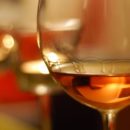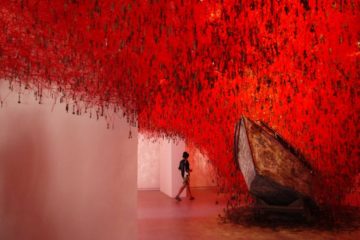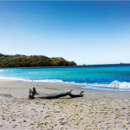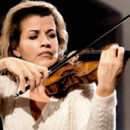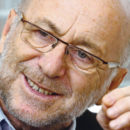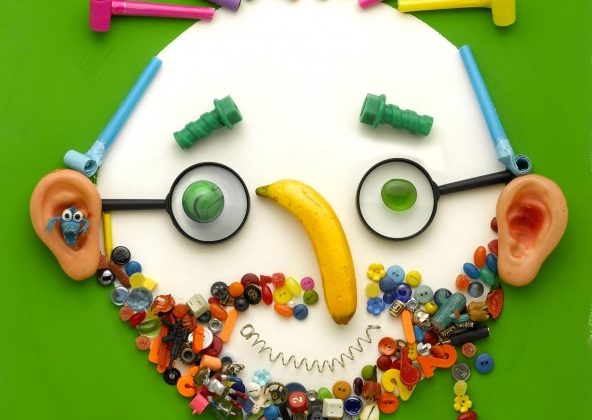
Hanoch Piven: “I try to create a fun and friendly place of confusion.”
In an increasingly pragmatic world, Hanoch Piven makes room for playfulness and creative displays of one’s true self. Born in Montevideo, Uruguay, he is an artist, an editorial caricaturist and illustrator of children’s books, with a background in Visual Arts, which he studied in New York.
On May 19th, Hanoch Piven will conduct two creative workshops for families at Art Safari Bucharest.
Your creative workshops are famous all around the world. Would you give us an insight about what to expect from it at Art Safari Bucharest?
I don’t like to call my workshop an ART workshop because that can be intimidating to some people who tend to think themselves as NON-creative.
I call it a “communication workshop where the language is play with everyday objects”. That is something everybody can do.
So in the workshop I will invite families to choose objects which tell something about themselves and create some kind of visual representation. People end up creating a family portrait and end up feeling really happy with their creations but also happy with the process which leads to the creation, one in which they discus with their family what represents them.
What allows all that is PLAY. Art is a game and if you allow yourself to play you end up creating ART.
In your Tedx Jerusalem talk, you claimed that “playfulness is a fertile ground for creativity”. Do you think this rule can be applied regardless of domain or it is only for art?
Of course. I find that opening a playful space allows for communication and exploration to happen in a very different way. Play helps us create a fun place in which we are not afraid to try things. It is OK to lose in a game. It is harder to lose in real life. It is ok to be confused in a game. Harder in real life.
If we allow ourselves not to know, to explore, to error and to fail, there is a good chance we might stumble upon a new solution that we would have missed if we didn’t enter that process.
Play allows us to be in that process without paying a heavy price for all these mistakes and failures.
And of course this is not just for art but for any creative or developing process, whether in education, or business or life in general.
You are notorious for your caricature collages. What inspired you to settle for this technique?
My limitations. My lack of technical ability to draw and paint realistically as I wanted to. That led me to explore other ways of communicating. Graphic design, surrealism, dada, and other influences showed me that there were other ways of creating portraits and caricatures, and I created an amalgam, a collage, which became my own technique, my own language. Since then I am a firm believer in the power of obstacles, of disruption, in the creation process and this is what I try to teach in my workshops. I try to create a fun and friendly place of confusion.
You worked both with children and adults, cancer patients, army veterans… Do you think that art has indeed a therapeutic power?
Yes of course. Everybody likes to have control and power. Perhaps a person who is sick or is in a weakened situation feels impotency and frustration but within the small controlled space of art, they are powerful and have control. A person that is in the midst of creating something has that power. Not only that but the art allows the person to express something about themselves, about their situation. We all want to talk about ourselves. ME is our favorite subject. We all want to be noticed, to be listened to. Art allows us to have that.
The secret is to find an art method which is accessible, which doesn’t lead us to another frustration due to technical limitations. Collage is such a welcoming technique that everyone can easily use, create and express something through it.
Have you ever visited Romania before? What are your expectations in matters of culture, receptivity and interest?
NO! It will be my first trip to Romania and I am very excited about it because three of my biggest influences as a young illustration student were of Romanian origins: Andre François, Eugene Mihaesco and of course Saul Steinberg. So that makes me guess there is a connection between my work and certain Romanian sensibility in humor and I am very excited to explore and see whether that is true.


